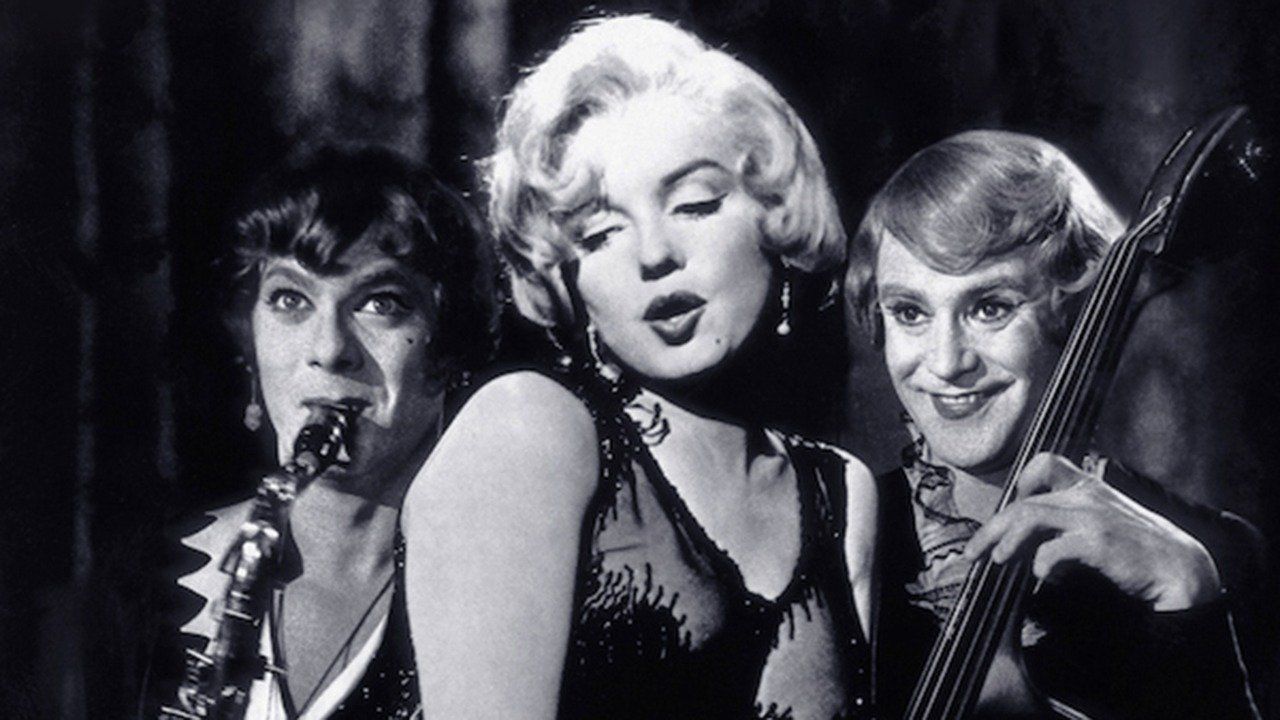
Some Like It Hot
Essential Viewing
Some Like It Hot is pioneering, iconic and simply a joy to watch.
Clare Walsh
Some films make essential viewing because they’re pioneering, some because they’re iconic, and some for the performances they house. ‘Some Like It Hot’ qualifies as all three, but the most important reason is that it is simply a joy to watch. I can attest that it stands up to endless re-watches too, seeing as it was my most-watched film as a child, and I still return to it over and over again.
Directed by Billy Wilder and set in Prohibition-era Chicago, the 1959 rom-com classic features two musicians Joe and Jerry (Tony Curtis and Jack Lemmon), who resort to female impersonation in order to join an all-female band bound for Florida, in which they meet Marilyn Monroe’s Sugar. Drag becomes the only means of escape for the pair as they fear a gory death at the hands of a gangster mob after they accidentally witness a fictional facsimile of the St Valentine’s Day Massacre.
The film plays upon the gangster culture of the 1920s; the prime example of this is the antagonist Spats Colombo, the ultimate satirical gangster. He is shamelessly based on Al Capone, infamous Chicago crime boss, who has a posse of thuggish men surrounding him at all times- surely this must have had some influence on the 1976 ‘Bugsy Malone’? It is the violence of this gang which starts Joe and Jerry on their odyssey, and they return in the third act, but with a twist. At a banquet in Florida, another crime boss ‘Little Bonaparte’ has Spats and his men murdered, by concealing armed men in a large birthday cake and murdering them unexpectedly. After this, ‘Little Bonaparte’ quips: “There was something in that cake that didn’t agree with them.” This satirical take on gangster tropes, with backstabbing, caricatures and witty remarks made after violent outbursts, is an effective deconstruction of the genre of crime dramas that remained popular for decades after ‘Some Like it Hot’ was released.
However, the film mainly rests on Lemmon and Curtis as a double act. They both work well as comedic foils for each other, as their characters take turns coming up with ridiculous schemes in the interest of self-preservation. Tony Curtis plays a charming but slightly sleazy saxophonist and does so excellently. In an attempt to seduce Sugar, Marilyn Monroe’s charming band singer, Curtis’ Joe pretends to be Junior, the heir to Shell Oil and lies, saying that he owns a yacht anchored off the coast. To get into this character of Junior, Joe does an especially camp Cary Grant impression, one of the film’s many pieces of comedy gold. This third case of identity fraud is the source of much of the farcical humour of the film. In order to keep up the ruse, characters run and cycle frantically to and fro between the hotel and the seafront - their staccato movements and the jazz accompaniment make these scenes like moments of Chaplin-esque silent comedy.
Jack Lemmon’s performance as Jerry has been praised the most, playing a down-and-out dejected everyman, but with a special comedic pazazz. It is in the scenes with Osgood, the millionaire interested in Daphne, Jerry’s female disguise, that he shines brightest. He endures and then enjoys Osgood’s romantic intentions - their tango scene is a paragon of physical comedy. Lemmon’s good-natured performance helps make the film’s final lines both so iconic, but also heartwarmingly believable: explaining to Osgood why they cannot marry, Jerry snatches off his wig and pronounces “I’m a man.” Completely unfazed, Osgood replies “Well, nobody’s perfect.”
Monroe proves herself to be a game comedy partner as, capitalizing on her pre-existing image as a sex icon, her characterisation of Sugar Kane is knowingly ditzy and seductive. At several points she performs with her little ukulele in skin-tight, practically nude dresses, not necessarily faithful to the period, but certainly in keeping with Wilder’s vision of it. One of the most disarming points in the film is her genuine heartbreak performing her final song “I’m Thru With Love”. It is at this moment, her voice quivering, that the audience truly believes in hers and Joe’s romantic relationship.
One of the most refreshing and modern aspects of the film is the women in the band ‘Sweet Sue and her Society Syncopators’. Here the millionaires who watch and romantically pursue the band are stupid and ridiculous, while the women in the band are ambitious, witty and foul-mouthed. Sweet Sue herself is great as a neurotic and cynical conductor, with her constant, shrill refrain “Beanstalk!” accusatively directed at the band manager. The band also flagrantly defies the strict prohibition and social expectations for young, unmarried women. This is best exemplified in the scene where they all end up in Jerry’s bunk and spontaneously have a party, creating a cramped tableau of the poor Jerry, increasingly stuck among them whilst they flout the rules and have immense amounts of fun. While women may not have had the freedom to act in this way in the 1920s, and not even when the film was made in the late 1950s, it remains a joyous portrayal of unselfconscious, communal womanhood.
Ultimately ‘Some Like It Hot’ is a farcical, satirical, invigorating romance against the backdrop of a world awash with booze, millionaires, gangsters, and jazz; I suspect much more fun than the reality of life in 1929. However, it is this unadulterated fun which makes Some Like It Hot essential viewing and one of the greatest romantic comedies ever made.